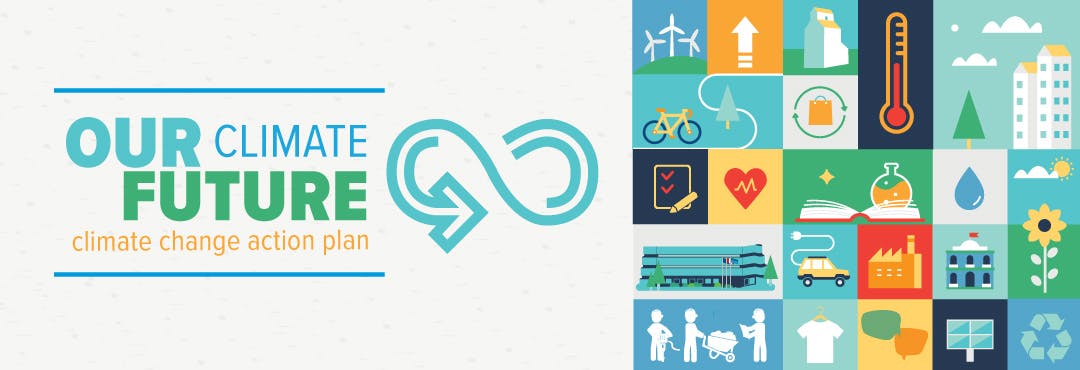Source Data for Resident Survey
- As of 2018, "Human activities are estimated to have caused approximately 1.0°C of global warming5 above pre-industrial levels" (A.1)
- Climate-related risks to health, livelihoods, food security, water supply, human security, and economic growth are projected to increase with global warming of 1.5°C and increase further with 2°C. (B.5)
- The IPCC recommends that global warming be kept to below 1.5°C above pre-industrial levels to avoid the worst effects of climate change (summary of multiple bullet points)
- "In model pathways with no or limited overshoot of 1.5°C, global net anthropogenic CO2 emissions decline by about 45% from 2010 levels by 2030 (40–60% interquartile range), reaching net zero around 2050 (2045–2055 interquartile range)." (C.1)
Where did information about future weather patterns and its potential risks come from?
In 2017, representatives from the City attended a climate resilience workshop with several other municipalities to develop a community specific Climate Resilience Express Action Plan.
Predictions about future weather patterns were made using a combination of the results from several climate change models, specifically the Pacific Climate Impacts Consortium.
Ways that these predicted changes to the weather could affect Spruce Grove citizens were identified by City staff during the workshop.
To prepare the Climate Change Action Plan, up to date predictions about future weather patterns will be prepared using members of the team behind the Climate Atlas of Canada, which you can visit yourself to look at climate predictions for locations across the country.
Where did information about historic greenhouse gas emissions come from?
Information about historic Spruce Grove GHG emissions came from the recently updated GHG inventory. To create this document, information about electricity, natural gas, fuel and waste was collected by City staff. GHG emissions relating to this energy use were then calculated using a GHG assessment tool that the Federation of Canadian Municipalities makes available to Canadian communities. Read the full Greenhouse Gas Inventory Update and Analysis Report.
What is the scientifically recommended goal? Where did it come from?
The Intergovernmental Panel on Climate Change (IPCC) is an intergovernmental body of the United Nations. The IPCC was created to provide policymakers with regular scientific assessments on climate change, its implications and potential future risks, as well as to put forward adaptation and mitigation options.
In the Global Warming of 1.5 C Summary for Policy Makers, the scientists belonging to the IPCC made the following recommendation:
